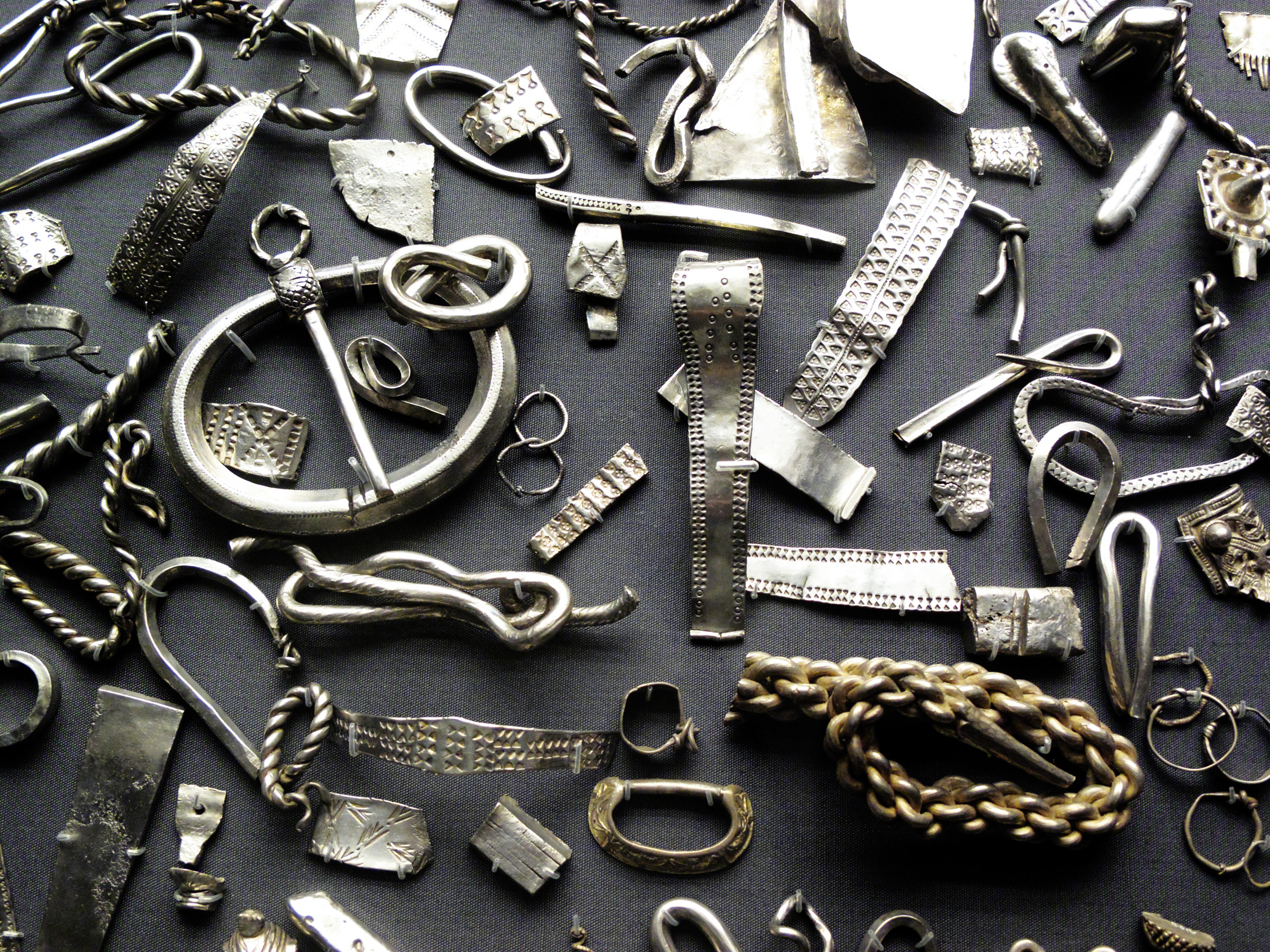
Short overview of the evolution of the means of exchange during Viking Era can be found in Viking Currency, an article by Dani Trynoski at Medievalists.net.
A basic economic concept to remember: part of the definition of money is a means of exchange and store of value. A silver armband, brooch, or coin can be both a store of value and means of exchange. Standard size silver coins are easier to work with on both criteria than jewelry.
A few pounds of silver is far easier to carry and use to buy stuff later than several dozen (?) furs, a dozen or two cows, or a few shiploads of grain.
Some fun highlights from the article:
The date on a coin found in a hoard provides a firm limit to when the hoard was hidden. A new concept to me (yeah, I’m early in the learning stage, but then that’s why I’m writing this post) is “terminus post quem (at the limit after which)”, meaning not any earlier than.
Apparently a hoard is generally dated a few decades after the newest dates on coins to allow for the coins to circulate a while.
That makes sense – – the journey of an Arabic dirham silver coin traded in the Mediterranean, eventually travelling up the Dnieper river, meandering across what is now Russia, sailing crossing the Baltic, trading a while on Gotland, and then getting buried by a wealthy jarl or merchant takes a decade or two.
Composition of hoards
The composition of hoards changed over time, which reveals the nature of the economy.
6th to 8th century – these hoards tended to contain complete items, such as arm rings or brooches.
8th to 9th century – mixture of coins, complete items, and hacksilver. Article has a new, better definition of hacksilver, which I previously thought was only a chopped up coin. A more precise definition: any item that has been cut up enought to make the item unusable for its original purpose. A coin, arm ring, or brooch could be cut up for small transactions and thus be categorized as hacksilver.
10th to 12th century – hoards consist “almost exclusively” of coins and hack silver. By weight, complete coins are dominant.
Scales and weights became common in the 8th to 9th centuries. This means precious metals were valued by weight. The appearance of weighing devices is consistent with the volume of hacksilver. If a transaction called for a quarter of an ounce of silver, both buyer and seller needed to know the silver coin had been cut into an appropriate size.
Transition to primarily coin based exchange systems required a centralized power, like a king who controlled most or all of a country.